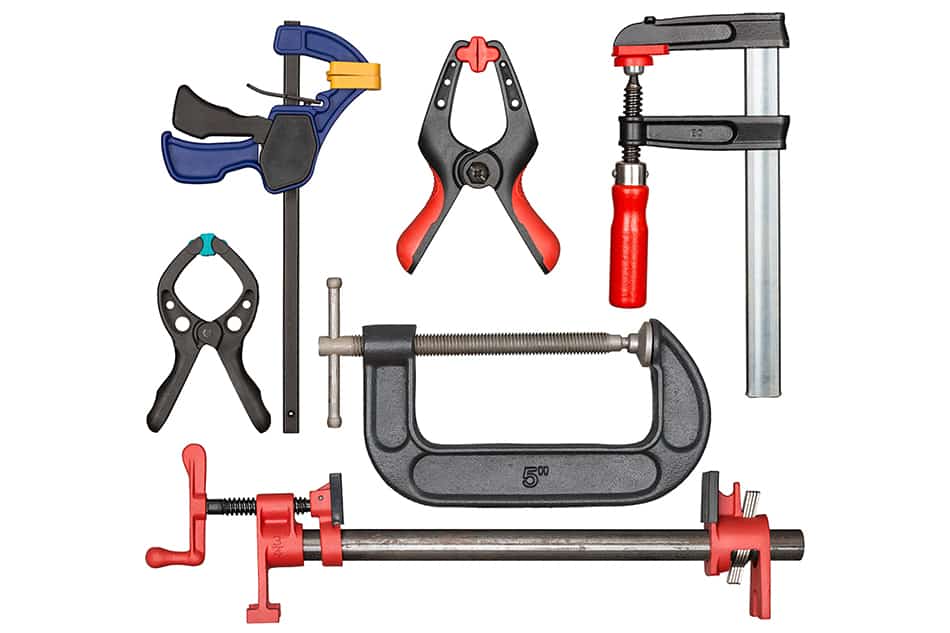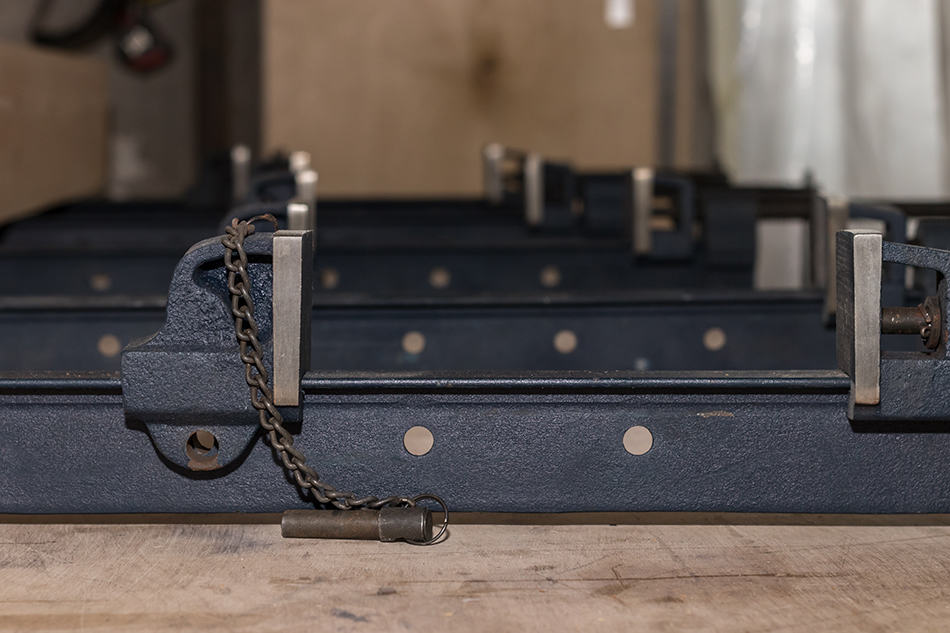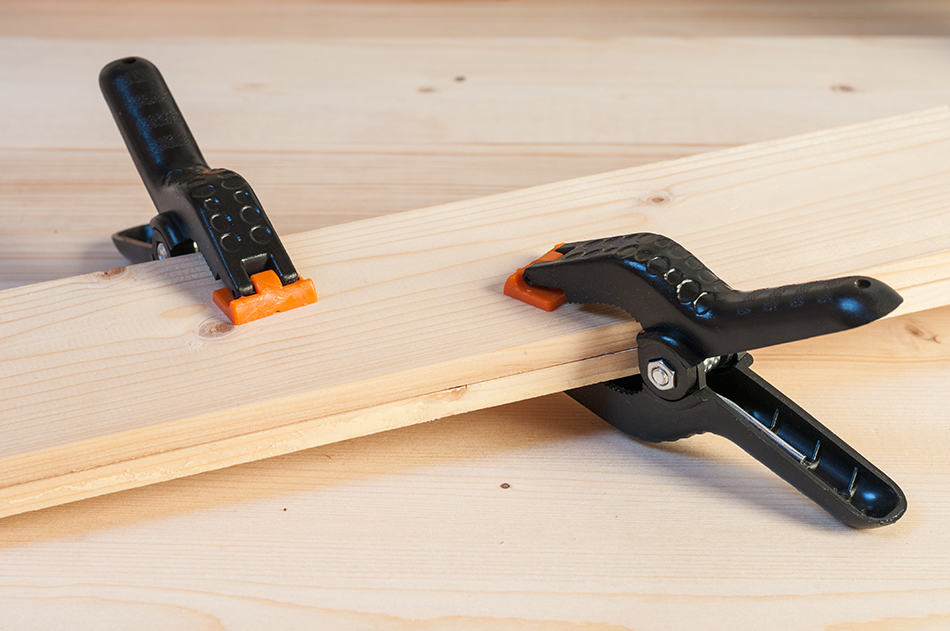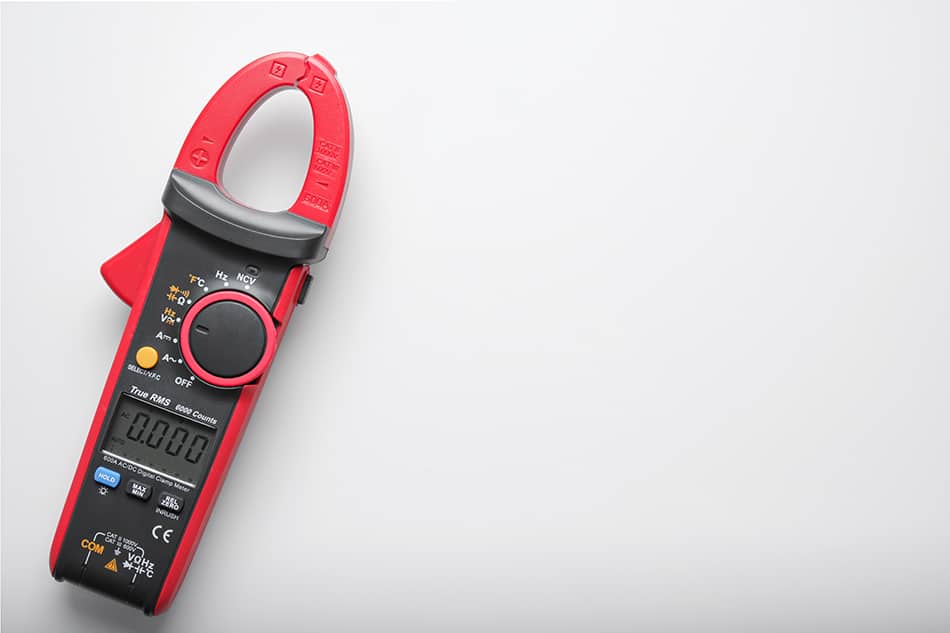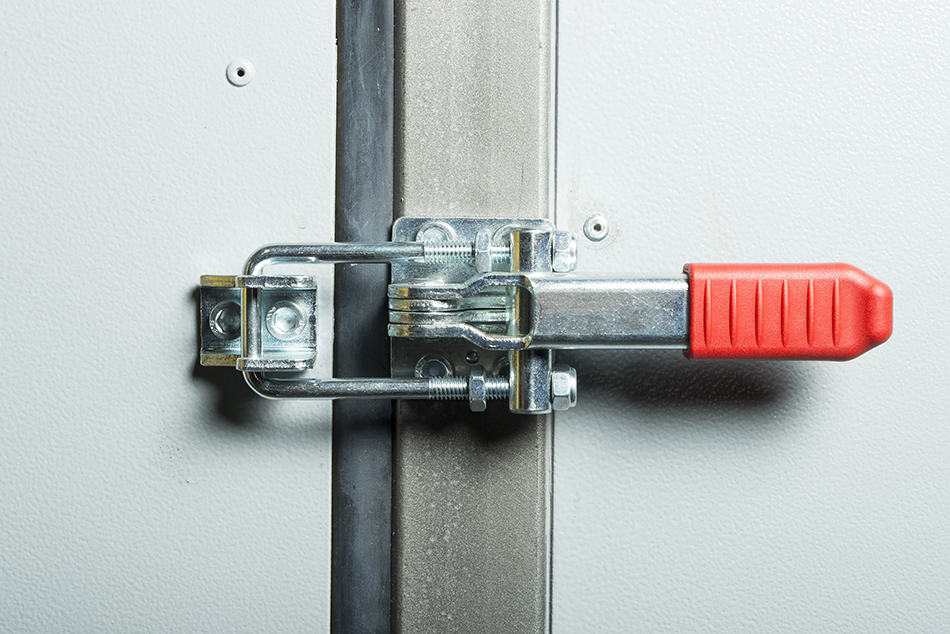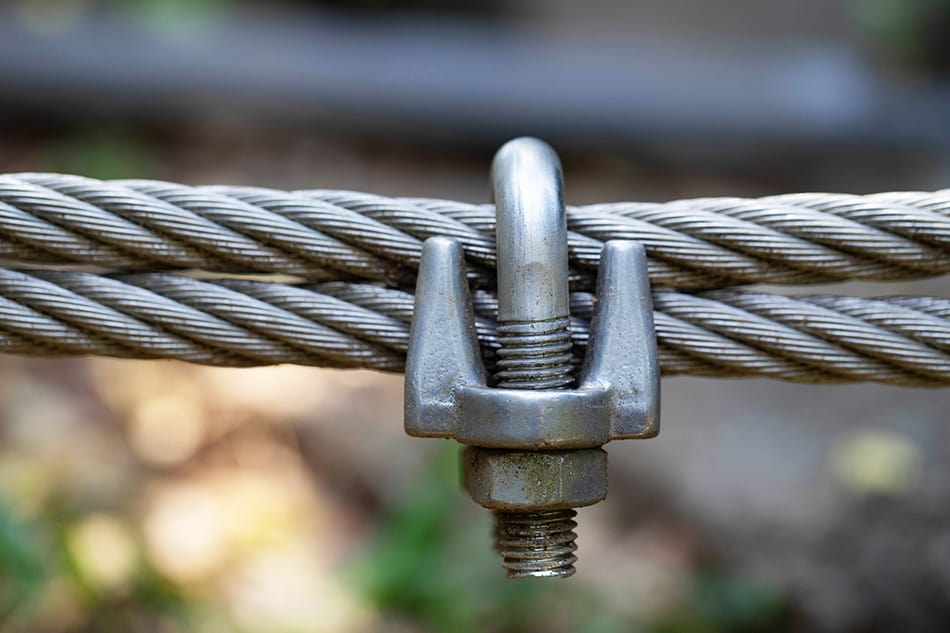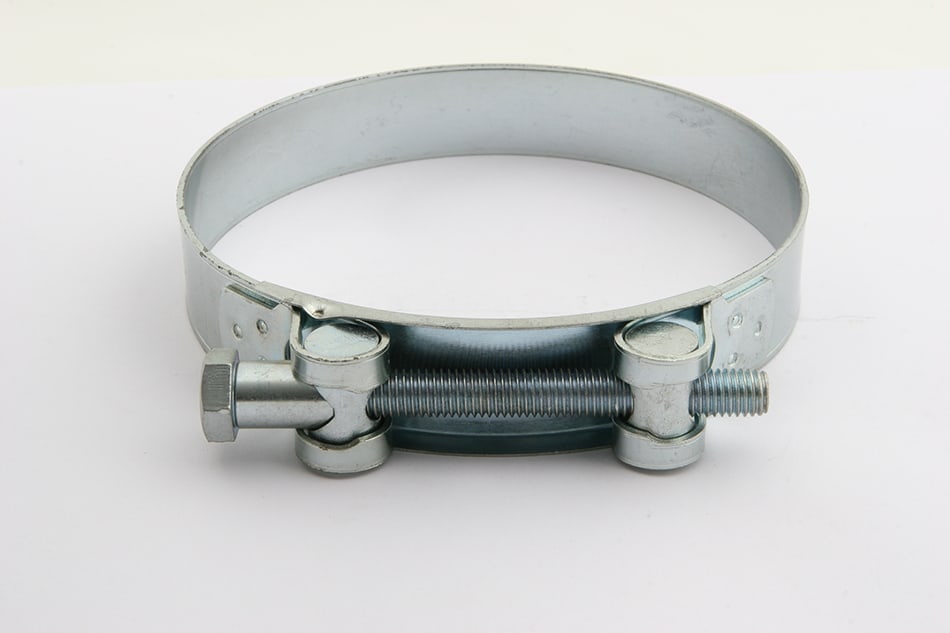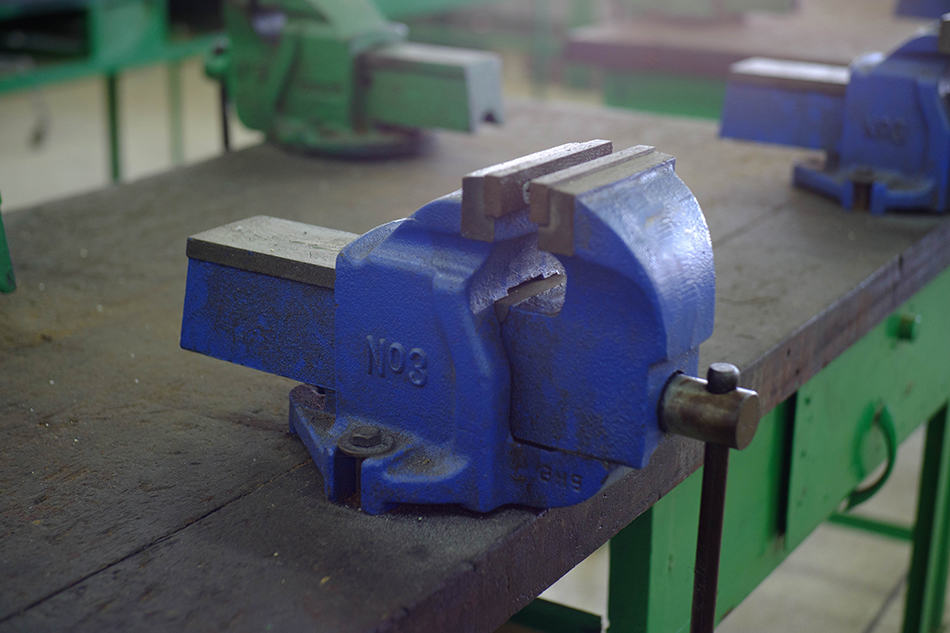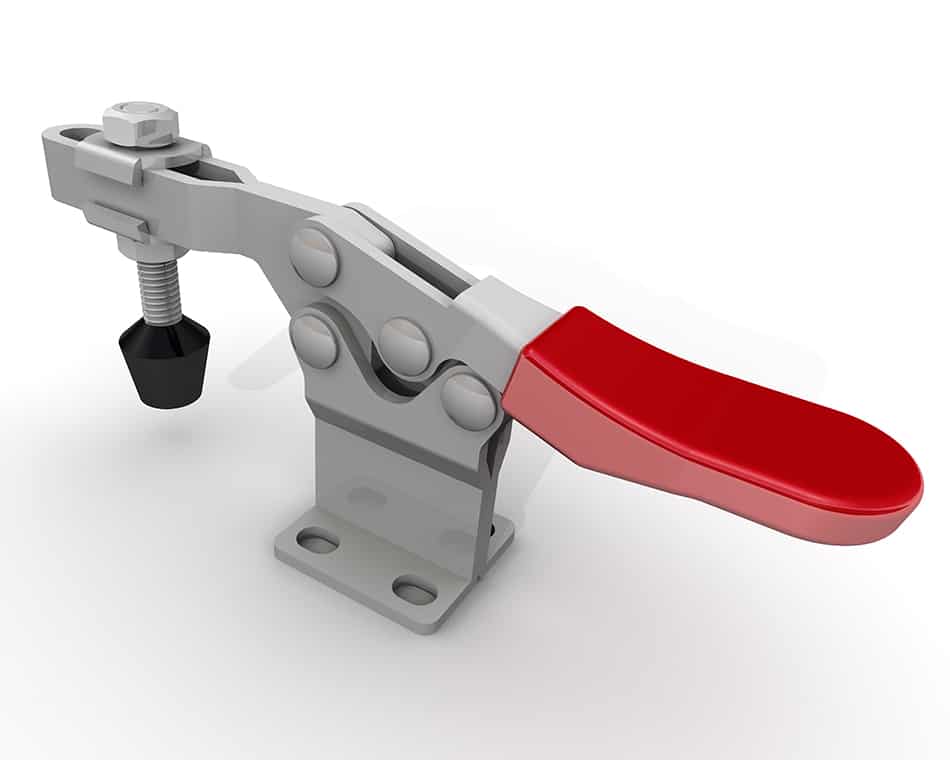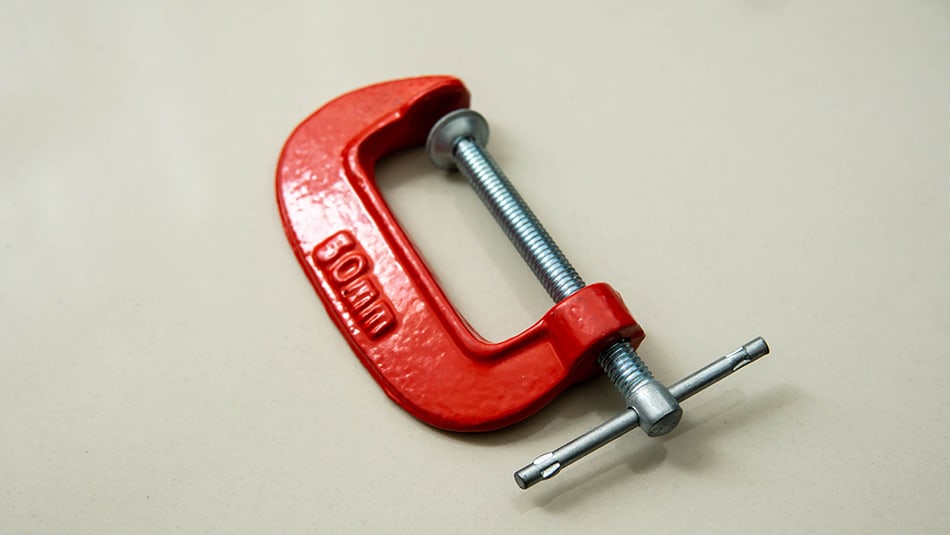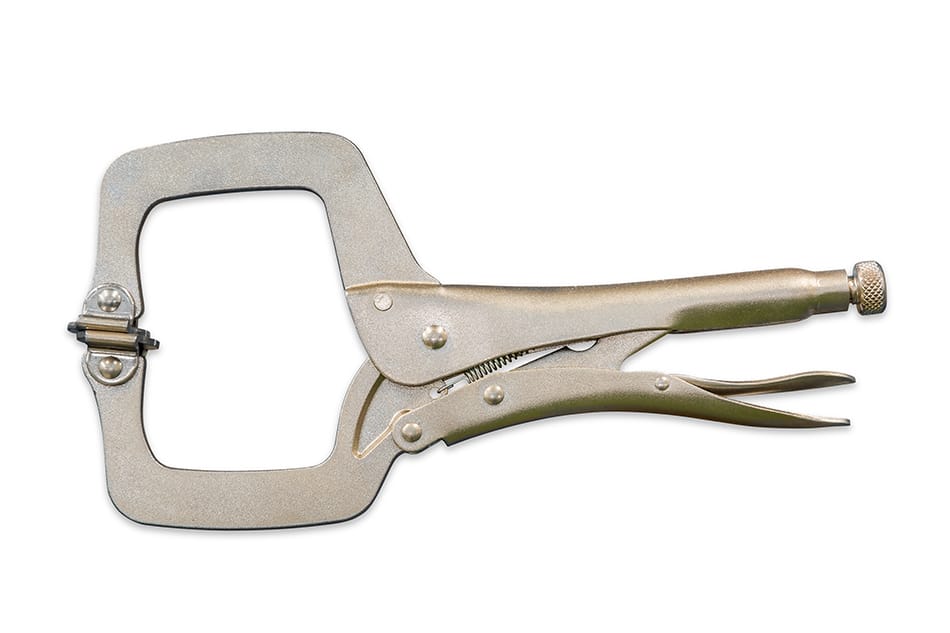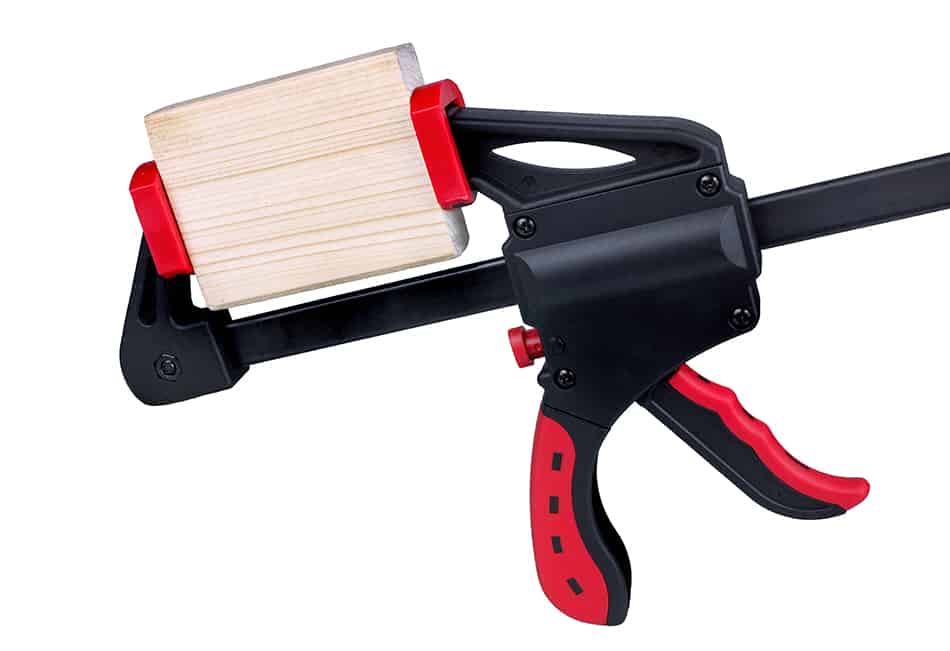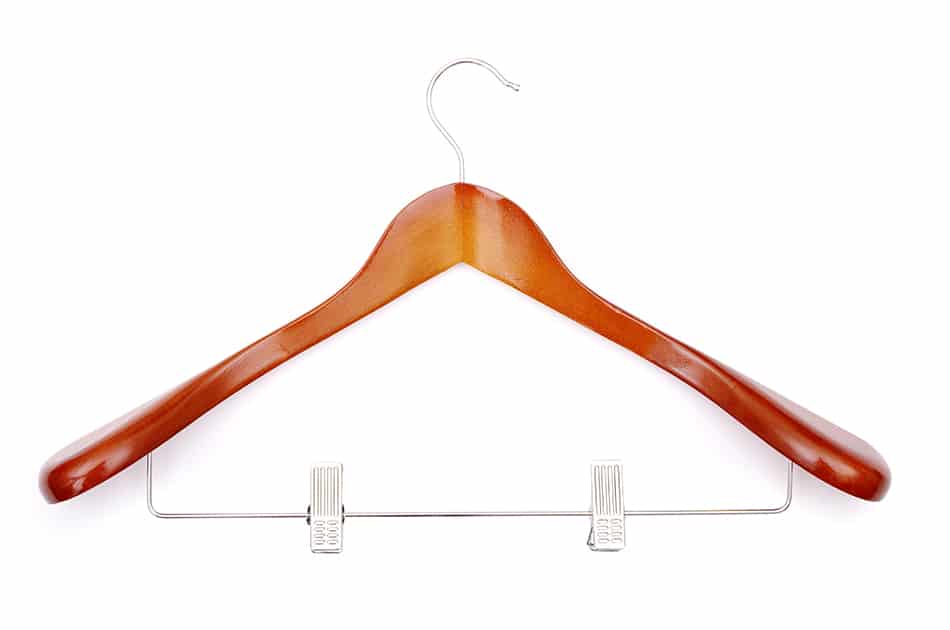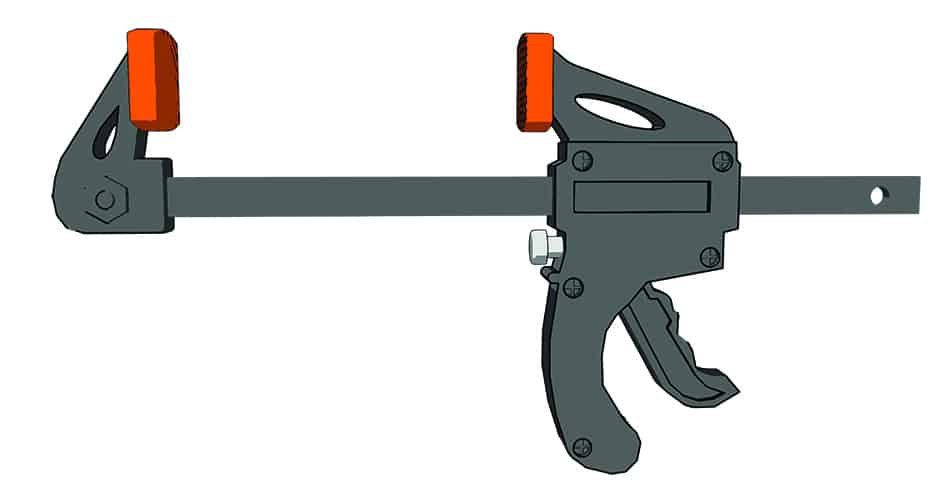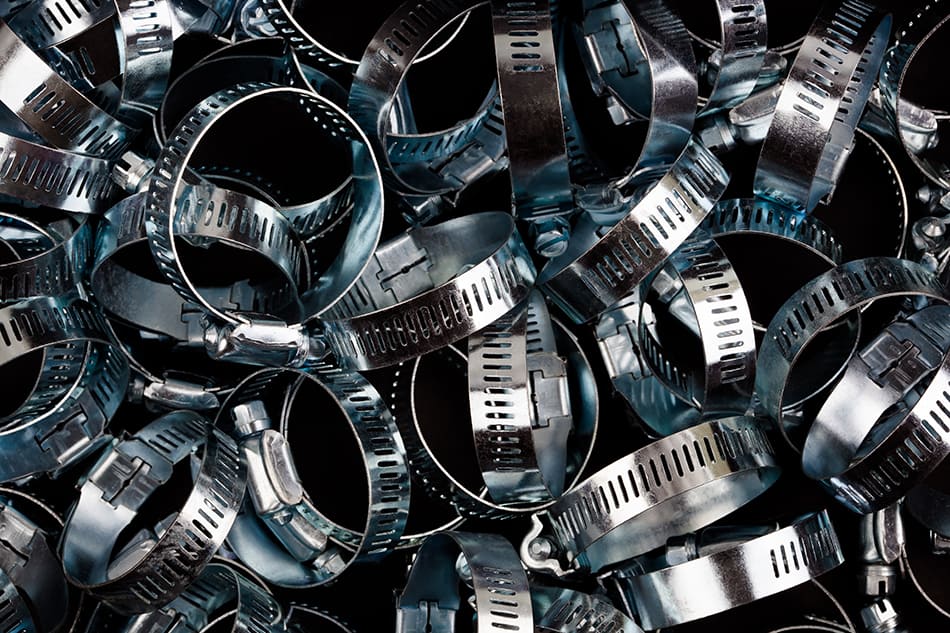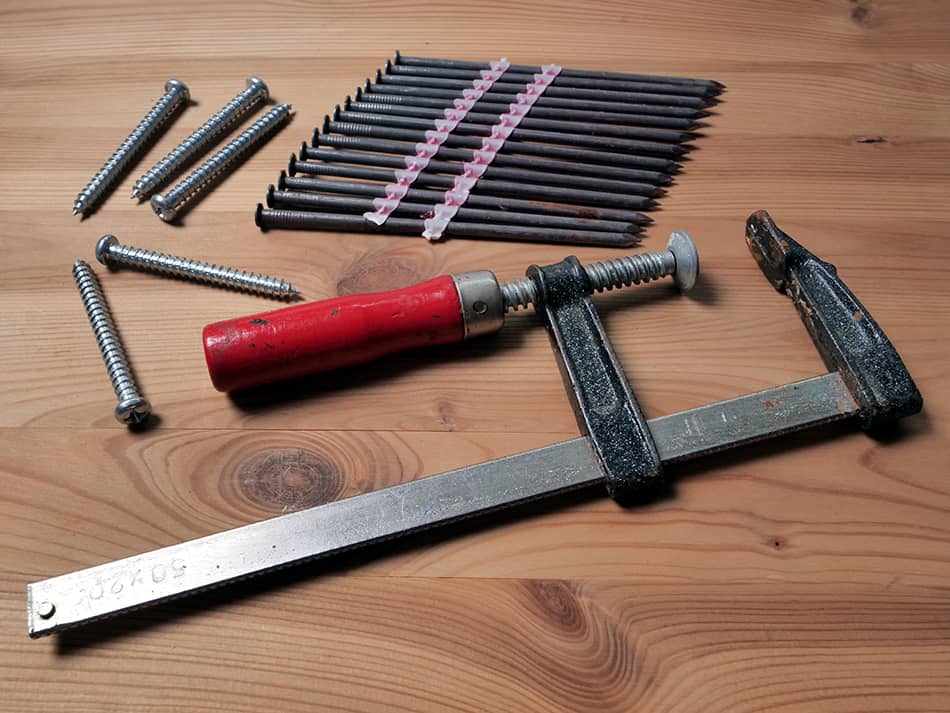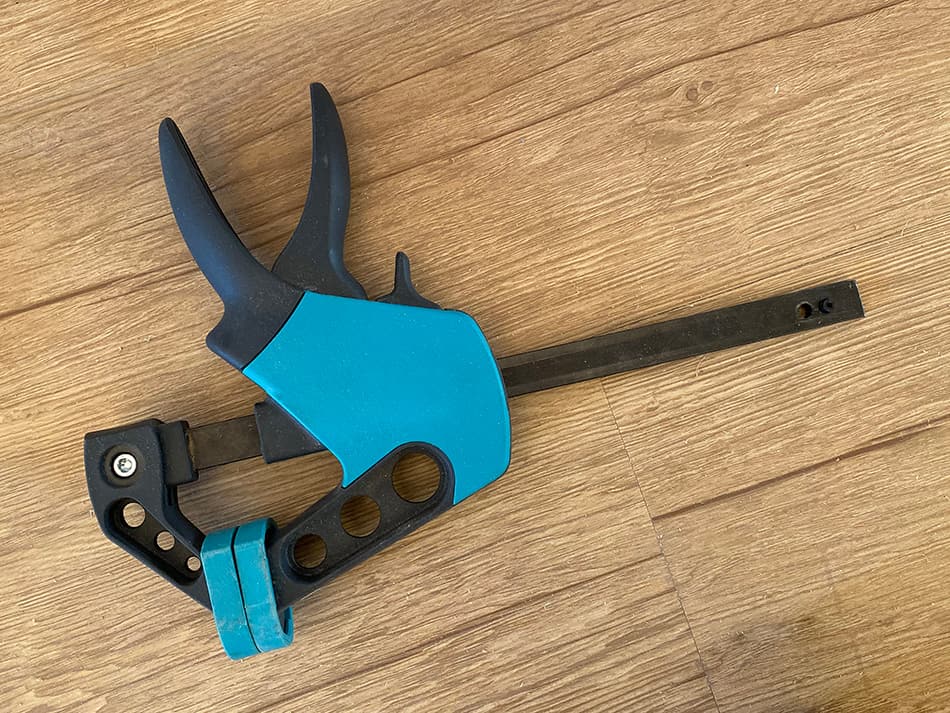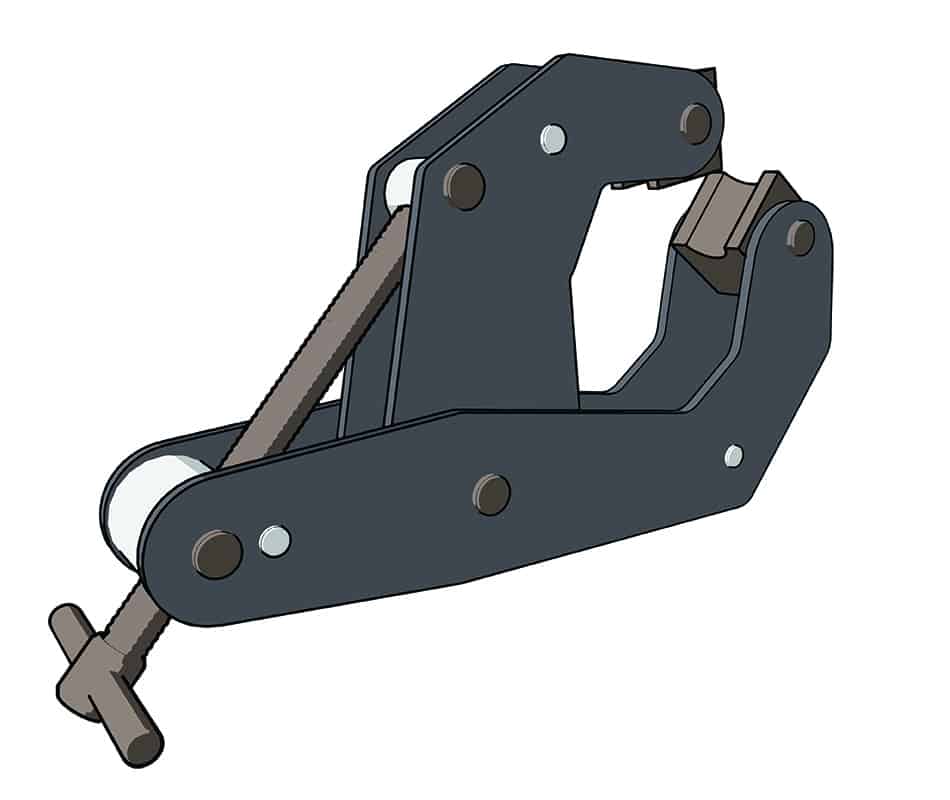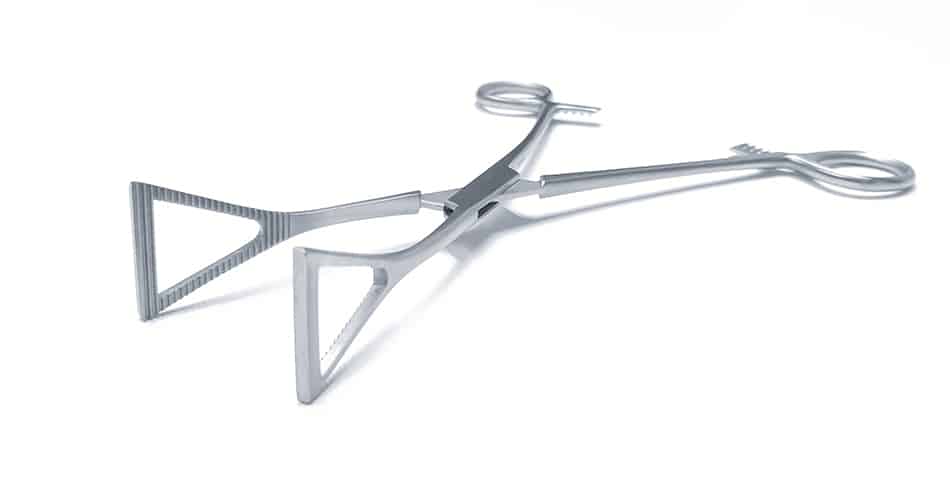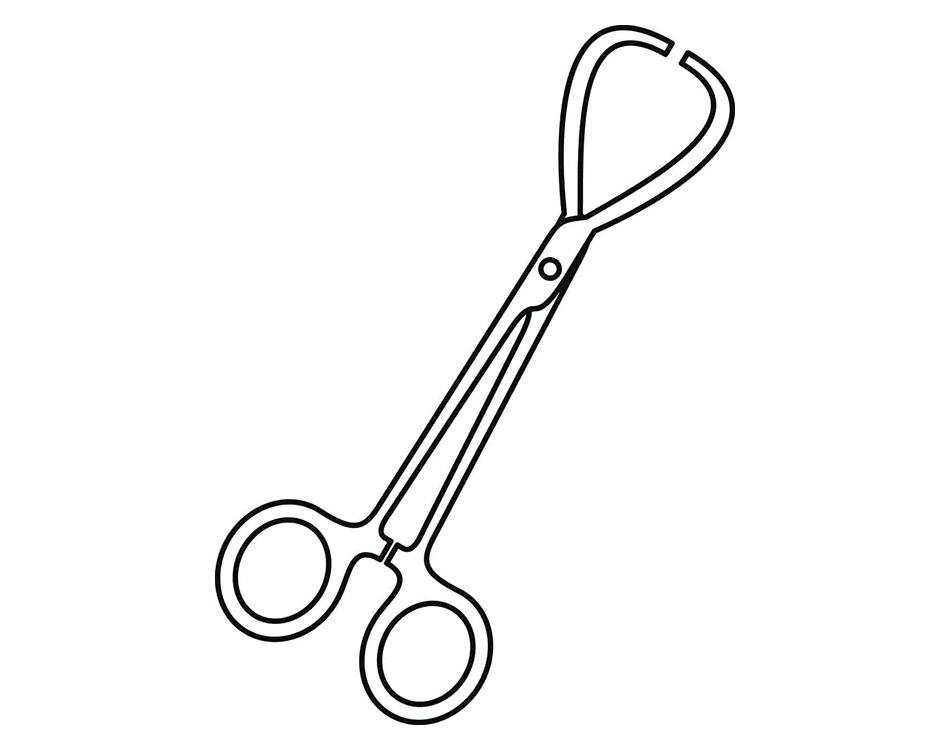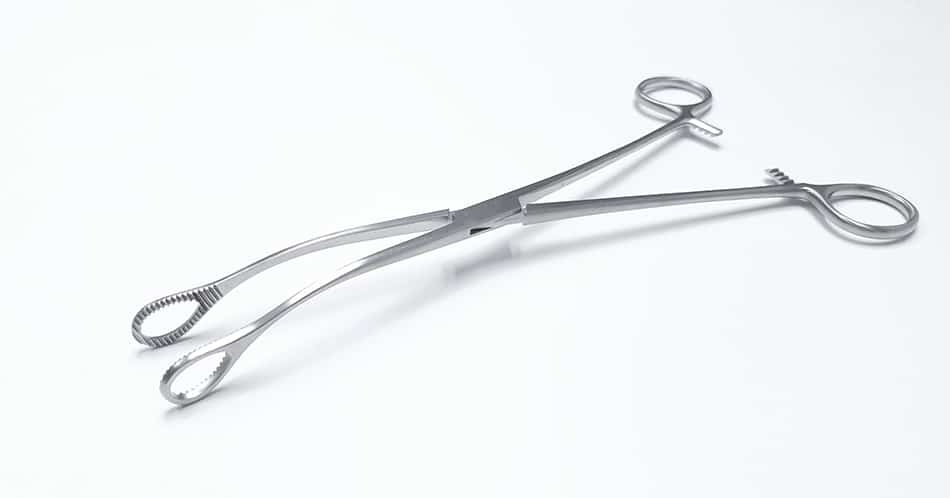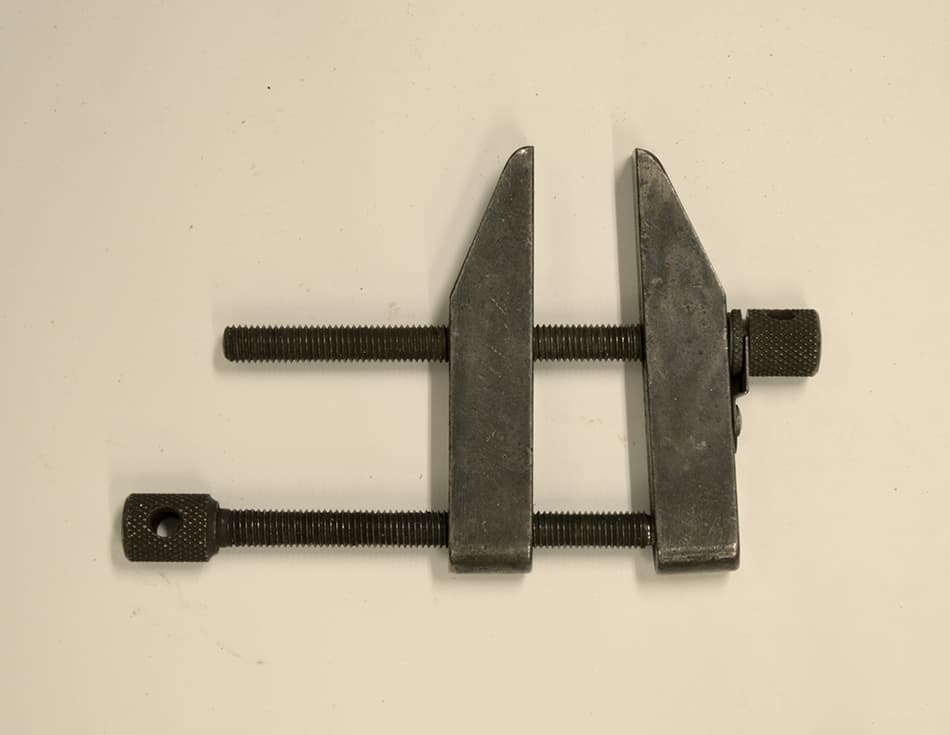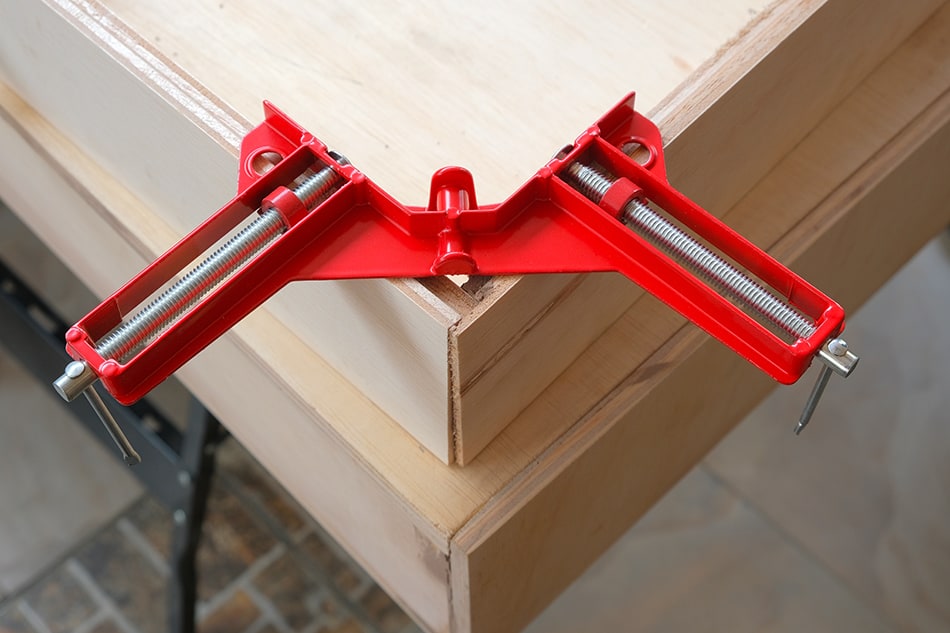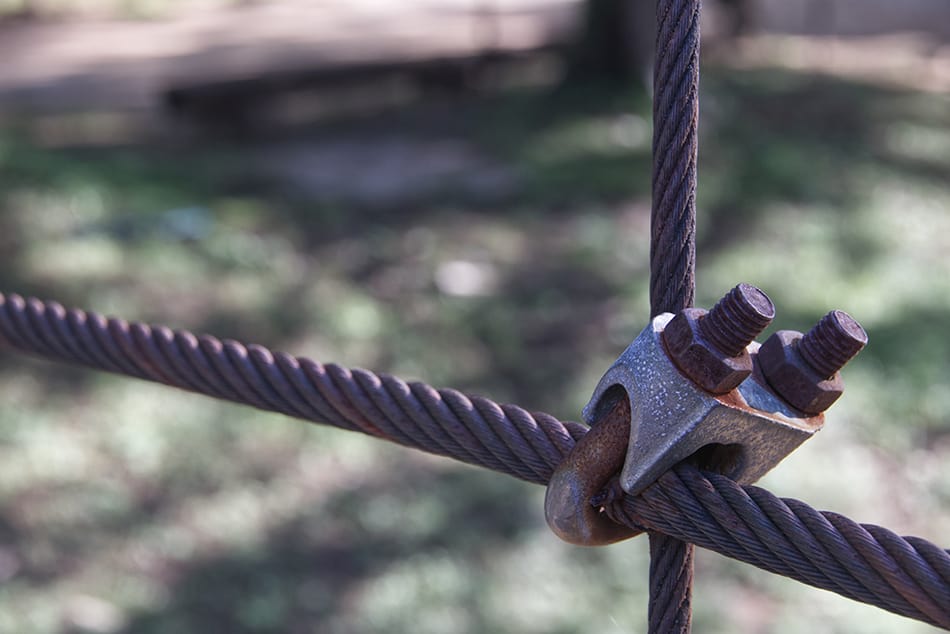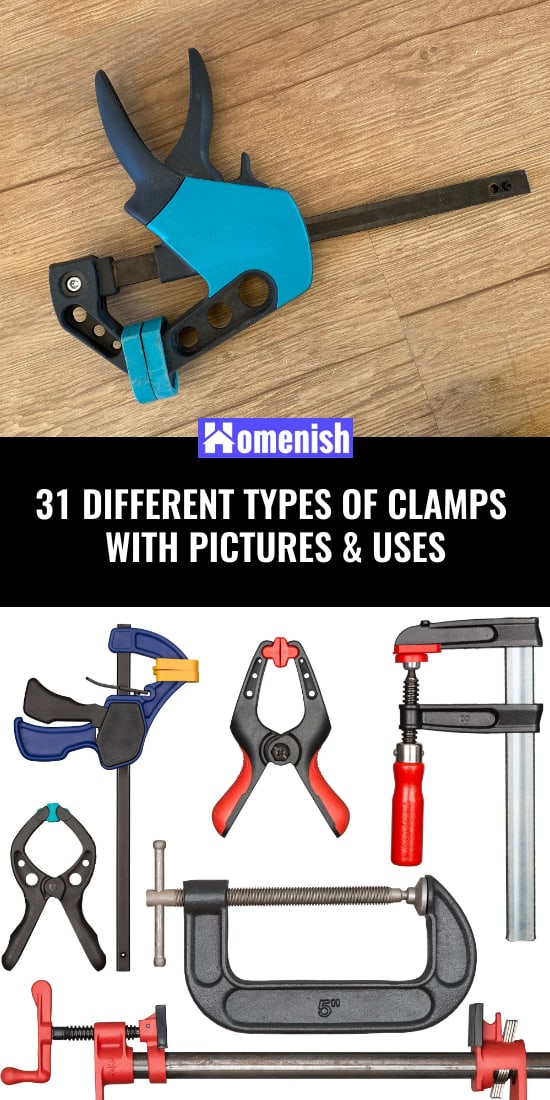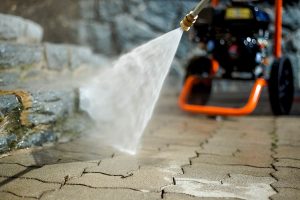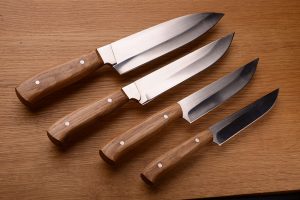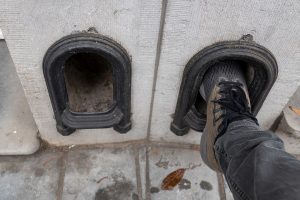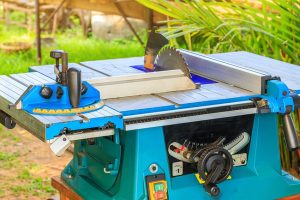Clamps are a tool that, at their most basic function, serve to hold material in place or hold several materials together. They are commonly used in woodworking, metalworking, manufacturing, and in hobbies or crafts such as jewelry making.
This guide explores many of the different types of clamps available, from common types to more specialized models.
Clamp Construction
Clamps are generally made from either metal or plastic. Most commonly, the jaws of the clamp will be metal, even if the handle is made from a different material, such as wood or rubber.
Metal ensures that the clamp holds tightly, is strong, sturdy, and long-lasting. The material of the handle is less important as far as functionality is concerned, but it can make the experience of using the clamp more enjoyable.
Metal handles, most notable steel, are great because they are strong, they won’t rust, and they will last the longest. However, they can feel uncomfortable to grip. For a more pleasant grip, plastic, rubber, or wood can be used for the handle construction, but remember that these materials are susceptible to cracking under pressure, and they won’t fare well in extreme temperatures.
Plastic, in particular, can crack at very low temperatures, rendering your clamp useless. Some clamps, which are not intended for heavy-duty use, may be made entirely from plastic. These are great for small projects where you don’t want to spend a lot of money on infrequently used equipment, but be aware that they won’t be as strong as their metal counterparts and should not be expected to last for a long time.
Types of Clamps
This list encompasses 31 different types of clamps, some of that is versatile enough to be used on a range of projects, and others, such as surgical clamps, which have very specific uses. Use this list to learn more about different types of clamps, what they are used for, how they work, and if they are the right tool for your needs or upcoming project.
Sash Clamp
A sash clamp is a large clamp that is suitable for working on large projects, such as windows or doors. In fact, the name sash clamp refers to the fact that this clamp is commonly used to hold sash windows.
These clamps have a long bar that is designed to tightly hold large items in place. You would typically use a minimum of two sash clamps at a time to get a really good fit. On the long bar is a fixed jaw that can be loosened or tightened with a screw.
They also have a sliding jaw that can be moved along the length of the flat bar to secure the project at different points. Sash clamps are specialist clamps that are often used to hold two items together while the glue dries so that they are set perfectly.
Spring Clamp
These clamps are handheld clamps that operate via a tension spring. They are very strong, and once positioned in place, the spring ensures they hold tight and do not move, giving the user a firm, secure grip.
These clamps can be found in a range of sizes to suit an array of different projects. They are made from metal and usually have PVC coverings over the handle part and also the tips to prevent injury during use. They can be useful in carpentry, jewelry making, and various other crafts. If the PVC covers at the tips are removed, you can also use a spring clamp for solder work.
Power Clamp / Pneumatic Clamp
These are pneumatic clamps that lock together in a strong and powerful way. They are often automated, set on timers to clamp and unclamp at specific times. Power clamps were originally designed for use in the automotive industry in an attempt to increase productivity and move away from manual clamps.
Power clamps are now used in a number of applications, including assembly lines and manufacturing industries. They save time by operating automatically and reducing manual interference. They are also useful in fields where access is limited and ordinary clamps cannot reach, such as in drainage lines or in remote areas.
Toggle Clamp
These are relatively small clamps that are commonly used in metalworking, woodworking, and drilling. They have a flat bar that holds your equipment in the required position and a handle that can be pushed backward or forward to loosen or tighten the grip. This handle operates the clamp and also involves pins and levers that can further increase the force of pressure.
Pinch Dog
These are small metal clamps that are used in woodworking. They are shaped like a square bridge, with ends that taper to a sharp point. When you have two pieces of wood freshly glued together, you hammer in a pinch dog to hold the wood in place while the glue dries.
The tapered ends ensure that the wood is tightened closer together the further the pinch dog is hammered in, resulting in a strong and neat glue line. These are very simple clamps that have a very basic premise, but they work incredibly well and are an essential tool for any hand woodworker.
Step Clamp
These clamps can be used in an array of industries but are most commonly found in milling and machining. They are typically manufactured from metal with an enamel finish and can be easily recognized by their serrated edges that look like a set of steps.
A step clamp will need three components; the clamp, clamp support, and a bolt with a nut for fixing the clamp into place. These are simple designs that are inexpensive to buy and easy to operate but are very effective.
Bench Clamp
Bench clamps are used to hold items in place on a bench and are common in woodworking. With these clamps, the bench itself takes the place of the jaw of the clamp.
These woodworking clamps are ideal for fixing wood in place during sawing, drilling, or planning. They are made from metal and can come in various sizes and designs. These are inexpensive tools that are essential in carpentry.
Web Clamp / Strap Clamp
These clamps are commonly used in furniture making and woodworking. They utilize a cord or fabric belt that straps around an item and then locks solid corners into place.
The belt can be tightened with a ratchet. These clamps are useful for tightly fixing themself to a large item to then load it onto a truck or for keeping it in place during work. It can also be used without the corner pieces if you are working with an item you are concerned about damage.
Pipe Clamp
As the name suggests, these clamps are intended for use with pipes. They are also known as gluing clamps because their primary use is to hold items in place for gluing.
They work similarly to a sash clamp, but they have a cylindrically shaped shaft instead of a flat bar. This is the part that goes around the pipe and can be tightened up with a screw. The jaw of the clamp is easily adjustable but gives a firm hold in a wide number of positions.
Wire Rope Clamp
This is a specialist type of clamp that will not easily be found in hardware stores, and if you require one, you may need to order online or find a specialist stockist. These are also known as wire rope clips, and their purpose is to fix a loose piece of wire rope back onto the rope itself.
They are made up of a metal saddle and some bolts that hold everything together. The bolts will tighten or loosen the grip of the clamp. While these clamps are useful for their specific purpose, they have very little other use and are not versatile.
Marman Clamp
This is a piece of metal with a circular shape (like a band) that has a gap in, where a bolt is fixed to be able to loosen or tighten the clamp.
These are ideally used to hold together two pipes or cylinders, and the easy bracket makes it good for quickly releasing the items. This band clamp type is a strong clamp that is often utilized when working with fuel lines in aircraft.
Bench Vise
This type of vise fixes directly to a bench or work surface and then has an upward-facing clamp that is loosened or tightened via a lever. These are heavy-duty, usually steel tools, which are commonly used in woodworking.
They hold projects in place while you saw, drill, sand, or plane them. Some bench vises are permanently fitted to the bench, while others can be portable, with screws that can easily be undone in order to move the vice to a different area of the workshop.
Mitre Clamp
A miter clamp, as the name suggests, is a clamp that holds two items in place that have miter joints. These will typically be two pieces of wood, which are pushed together by the clamp so that they are held tight and still while you work on them.
Basic miter clamps are made in a C-shape and are spring-loaded to hold the pieces in place. You can get various types of miter clamps that are much more involved, with numerous parts to make the tool more versatile, reliable, and functional. Some miter clamps will have moveable jaws, while others serve their basic purpose with a right-angled clamp.
Quick Action Clamp
This type of clamp can be operated with just one hand, making it super convenient to work with. This feature enables you to be able to hold the clamp, as well as the item you need clamping.
It has a fast release button that can be switched with one finger, allowing extra fast movement. This type of clamp is very strong and can be used in a variety of situations. It is one of the most versatile and hassle-free hand-operated clamps.
G or C Clamp
Known as a G clamp or C clamp because of their shape that resembles these capital letters, these are the most common type of clamp that comes to mind when most people envision a clamp. To understand how it works, check out our page on the parts of a clamp.
The ‘C’ part of the clamp goes around both your work surface and the item you want to clamp down, while a long screw gets twisted around to tighten the jaw and make the clamp secure.
Locking Clamp
A locking clamp is a blend between a plier and a C-clamp. It has a C-shaped jaw and by putting pressure on the lever, the clamp and tighten the workpieces held.
Hand Screw Clamp
These types of clamps are common when working with metal, and they are great for fixing pieces of furniture. They have jaws that are adjustable and able to hold items even at irregular angles. These clamps are generally very heavy-duty, being made from steel. This makes them strong and long-lasting.
Trigger Clamp
This is a versatile clamp that is sometimes known as a one-handed clamp due to the fact that it can be used with one hand. It is easy to operate, strong and reliable, and can commonly be found in workshops, as well as around homes and gardens, and in various hobby toolboxes.
It has a trigger mechanism that can adjust the jaw. The trigger is controlled either by a button or a lever, which means that the clamp can be released quickly and easily.
Drill Press Clamp
These are specialist clamps that are intended to be used with drill press tables. They work to secure your material to the drill press table so that you can make clean and accurate cuts with no movement from the material you’re working on.
The clamp can be easily adjusted to make for a perfectly tight and firm fit and also releases quickly, making it even safer and more convenient.
Clip Hangers
This is a type of clamp fixed to a clothes hanger. It is easily operated by hand and usually comes in pairs on a hanger in order to hold clothing such as skirts or pants.
These clips are strong enough to hold lightweight clothing but have a certain amount of giving in them to prevent the clothing from being held too tightly and damaged. Some of these clamps are padded to offer extra protection to fragile clothing items, such as those made from silk or wool.
Picture Frame Clamp
A picture frame clamp is basically a set of four miter clamps all connected together to create a space for a square or rectangular frame. These are used in the creation or manufacturing of photo frames, fitting four pieces of material together to create four neat miter joints. These clamps ensure the photo frame is glued neatly and tightly, giving it a clean look and strong construction.
Flooring Clamp
These are large clamps that are used when laying down tongue and groove flooring. They are not versatile, and this is the only function they serve, though they do this very well.
These floor clamps fix the floorboards in place so that the carpenter can nail them down, secure in the knowledge that they will not move and will therefore be fitted in exactly the right place. Flooring clamps can hold as many as ten boards in place at any one time.
Speed Clamp
This clamp is also known as a bar clamp or an ‘F’ clamp due to the fact that it uses a long flat bar and looks like an ‘F’ shape. These clamps are commonly used in woodworking and metalworking, generally for holding two materials together while they are glued, screwed, or welded into place.
They operate just like a ‘C’ clamp but have a larger jaw and, therefore, a much greater capacity for holding bigger items. These types of clamps are tightened by a screw and loosened by reversing the action.
Hose Clamp
These are small circular clamps made from thin metal, often aluminum, and can be tightened with a small screw. They can be used in various applications around the home or in vehicles, usually to hold cables together or similar-sized materials.
They are an alternative piece of equipment for cable ties or duct tape but have the advantage of being longer lasting due to them being of metal construction.
Screw Clamp
These clamps have two handles that can tighten or loosen the grip of the clamp by being screwed through the threads. They offer a very strong hold and are typically utilized in woodworking or metalworking.
Quick Grip
These clamps are useful for smaller projects, as their jaw is not very wide and therefore is best for holding two thin items together, such as two sheets of metal.
They can be used with just one hand, leaving your other hand available to be working with your materials. They are quick and convenient to use and have a quick-release mechanism that enables you to swiftly let go of the materials you are clamping.
Cardellini Clamp
These clamps are designed to hold the tubing in place while it is worked on. They are compatible with round or square tubing and can also hold flat items in places like plywood or metal sheeting. It is useful for using in tight spaces due to its lean and long shape and can be inserted anywhere with a capacity of at least two inches.
These grips are especially susceptible to damaging the item they are holding when secured too tightly, even more so than most other clamps, so extra care should be taken when working with them.
Kant-Twist Clamp
This is a small but clever tool that is ideal for holding a wide range of materials in a number of circumstances, but it is especially useful in woodworking and metalworking.
A Kant twist clamp is very similar to a ‘C’ clamp, but it is set at an angle so that it can hold materials that do not run parallel to each other. These clamps are simple to use but offer a wide range of movement and are very strong and sturdy. They are typically made from steel or another alloy and are fairly inexpensive to buy.
Pennington Clamp
This is a medical clamp that also goes by the name of Duval clamp. It is shaped like a pair of slender scissors and has triangular eyelets at the tips.
It is named after the Australian surgeon, David Geoffrey Pennington, who pioneered microsurgeries. These clamps are favored in operations where tissue is needed to be grasped. They are common in rectal and intestinal procedures and also when performing Cesarean sections.
Hemostatic Clamp
These clamps are also used for surgical purposes and are shaped like scissors with ends that clamp shut to form a flat, tight line. They are especially useful in controlling bleeding and will commonly be used to clamp blood vessels before they are ligatured.
The handles of hemostatic clamps can lock together, thereby holding the clamp in place and ensuring it doesn’t spring back open while it is doing its job.
These clamps go by several names, including arterial forceps and peans. Various designs exist, some with straight tips and some with curved tips. Other models of hemostatic clamps that are used in other surgical areas include Satinsky clamps, Crile forceps, Kelly forceps, and Rankin forceps.
Mogen and Gomco Clamps
This is a medical clamp that is used to perform circumcisions. It is thought of as being very simple to use and results in minimal scarring. These can be used multiple times and, therefore, should be properly sanitized to prevent the spread of germs and potential infections.
Foerster Clamp
These medical clamps are shaped like scissors with rounded eyelets at the end. They are also known as sponge clamps because they are great for holding onto spongy material, such as medical sponges, or soft tissues such as lung tissue. When grasping sponges, these tools are useful for swabbing up excess fluid, such as blood or saliva.
These are also commonly used outside of surgery for body piercings. They are especially common for tongue piercings, to hold the tongue in place and ensure that the needle pierces the right place. These clamps were named after David William Foerster, who is a doctor from Oklahoma who pioneered sex-change surgeries.
Ear Clamp
This is a very small metal clamp (usually < 1″ in diameter) that is mainly used to secure a hose to a fitting, a pipe, or couplers.
It is great to use for thin-walled applications such as small fuel, vacuum, and other parts in the automotive industry.
Parallel Clamp
A parallel clamp gives pressure to the materials clamped by two parallel vertical jaws with one-handed triggers. It is usually used to fix workpieces on spacious surfaces like tabletops and doors.
Corner Clamp
If you want to secure two workpieces’ joints into a 90-degree angle, there is no clamp better than a corner clamp.
It is meant to utilize for corner joints, so it may not be fitted for other ordinary clamp use.
Cable Clamp
A cable clamp is a u-bolt clamp that is used to tighten the loose sides of cable wires or steel ropes.
This is a small clamp that will leave some spaces for the cables to move through and can be held to keep the cables in a neat and tightened position.
